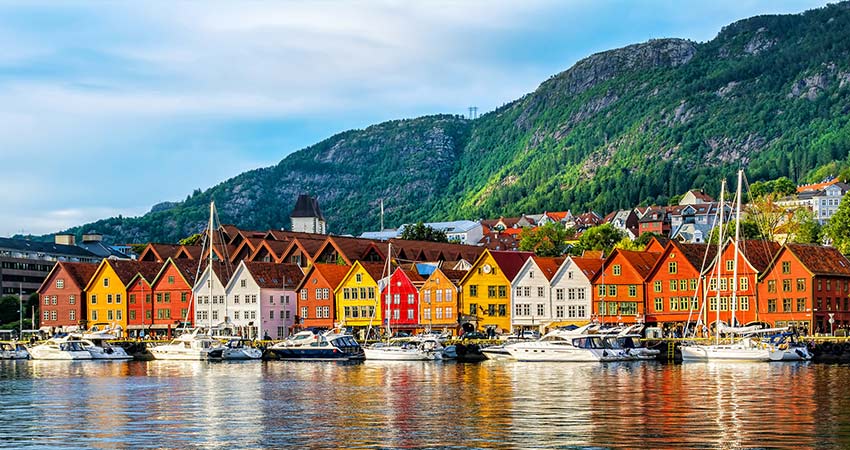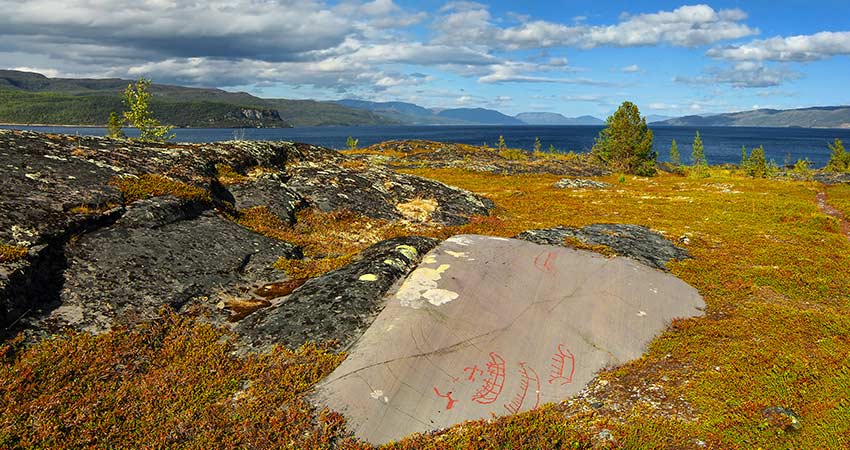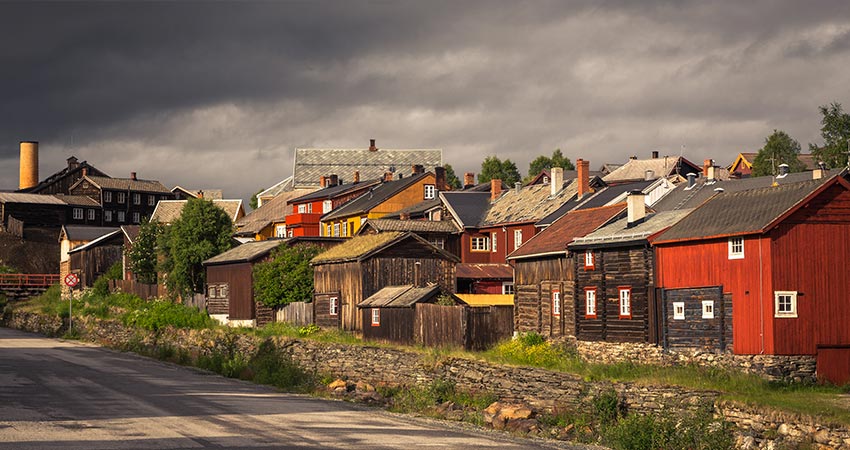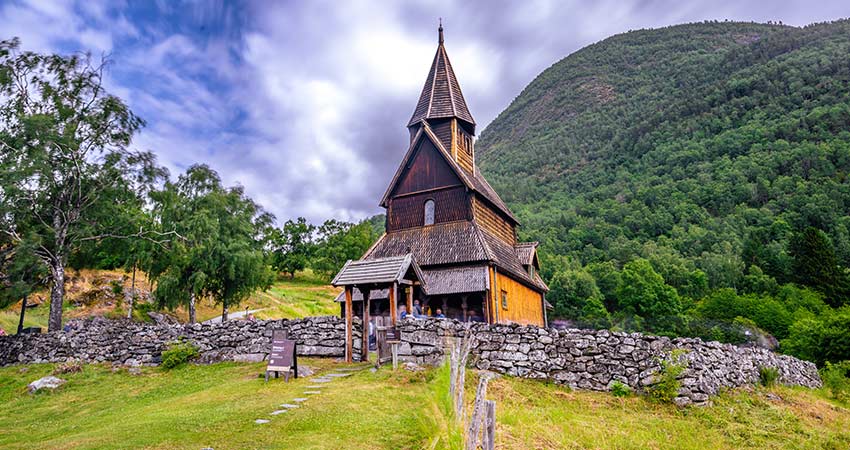When you visit Norway, you’ll find there are eight UNESCO sites, and each is a cultural or natural treasure. Discover the Vikings. See ancient rock art, magnificent fjords, today’s Indigenous Sami people, medieval villages, and centuries-old manufacturing cities. In this Scandinavian country you can experience travel at its most enlightening with friendly locals and without the crowds.
Put Norway’s Eight UNESCO Sites on your bucket list!
Bryggen
Explore Bergen’s medieval wharf, Bryggen, and you’ll fall back in time. This World Heritage Site was part of the Hanseatic League’s trading empire. The area is dear to Norwegians, and when fires ran rampant, the buildings were rebuilt according to the original plans. Its heart is well-preserved and is emblematic of urban buildings once common in Scandinavia; 62 sites remain. One of Northern Europe’s oldest harbor cities, colorful Bryggen is a joyous spot filled with museums, galleries, craft shops, boutiques, restaurants, and fabulous sailmakers.
Rjukan-Notodden Industrial Heritage Site
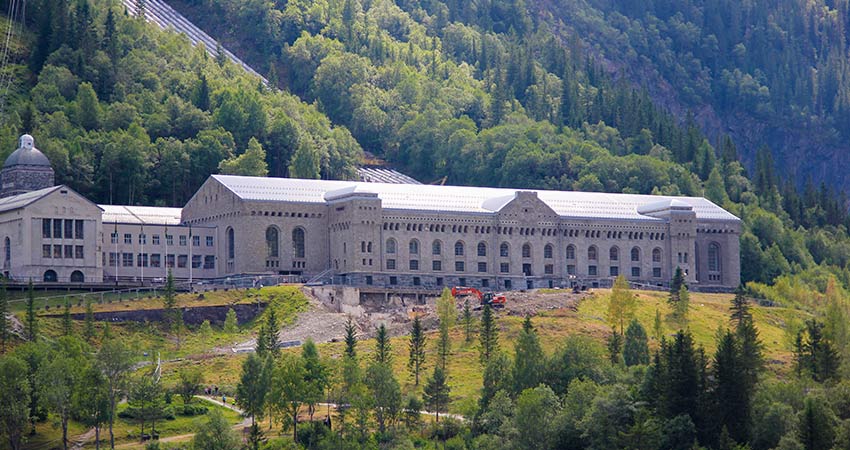
Due west of Oslo, these are company towns built to meet the world’s demand for artificial fertilizer. Strange for a UNESCO site? Not really. The towns are examples of early 20th century workers’ housing and their social institutions. The location is a stunning landscape of rivers, valleys, and waterfalls. There are also hydroelectric power plants, towns, and transmission lines. Somehow, they blend seamlessly with the surrounding natural world.
West Norwegian Fjords – Geirangerfjord and Nærøyfjord
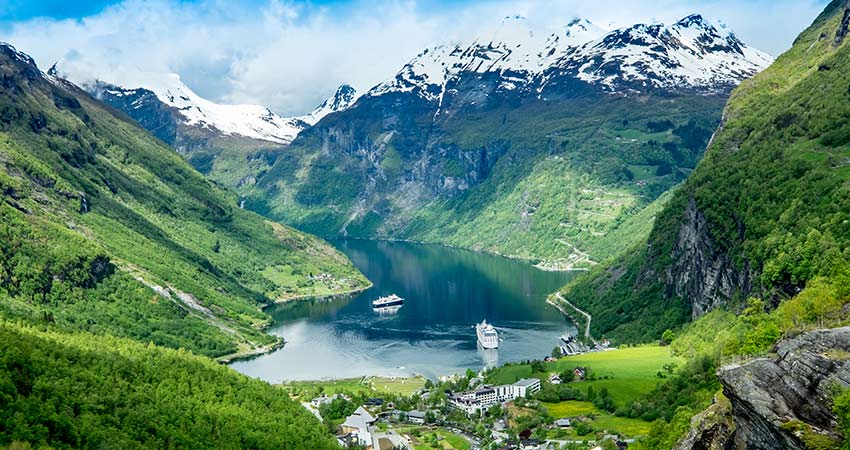
In southwest Norway, and northeast of Bergen, are two extraordinary fjords: Geirangerfjord and Nærøyfjord. They are just 80 miles apart, and they are among the world’s longest and deepest—the cobalt blue water is almost surreal. Narrow and steep, dramatic rocks walls rise 4,600 feet above the Norwegian Sea and reach 1,700 feet below sea level.
Waterfalls and wild rivers course down the sheer walls through forests, glacial lakes, glaciers, and breathtaking mountains. Plants, plus land and sea animals, are abundant here. This area is ideal for hikers and for those who simply want to take in the awesome wonder of Norway.
Rock Art of Alta
In the province of Tromso, these petroglyphs are located near the Arctic Circle in the Alta Fjord. There are, literally, thousands of rock carvings and paintings in 45 sites; no other place in Northern Europe compares. From 5000 BC to 500 BC, Alta was a tremendous gathering place north of the Arctic Circle. This art tells us the story of people who communicated between this world and the spirit world. We see the ritualistic, prehistoric life of ceremonies, processions, and dancing carved and painted in stone. It also gives us insight into the relationship between these hunter-gatherers and their environment.
Røros Mining Town and the Circumference
This area is a testament to people’s ability to survive and thrive in a harsh climate. Established in the 17th century, the copper mines were productive until 1977. It’s a perfect combination of industry and rural life. The town of Røros itself has 2,000 one and two-story houses. This is an amazing place to visit in order to see, first-hand, how a culture can adapt to the land and to working conditions, both.
The Struve Geodetic Arc
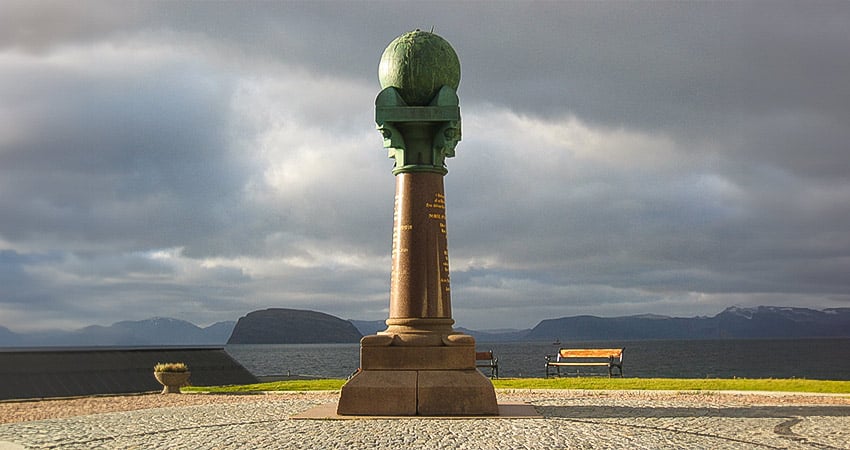
Running through ten countries and more than 1,700 miles, the Arc is a chain of survey points created from 1816 to 1855. The astronomer, Friedrich Georg Struve, was the first person to accurately measure a long piece of meridian; it aided in finding the exact size and shape of the planet. It is also a benchmark for cooperation between scientists and the royalty from diverse countries.
The original Arc included 258 main triangles and 265 station points. (Station points are places with unique markings such as a drilled hole, an iron cross, cairns, obelisks, etc.) This Arc is a beautiful example of scientific collaboration and technological know-how.
Vegaøyan – The Vega Archipelago
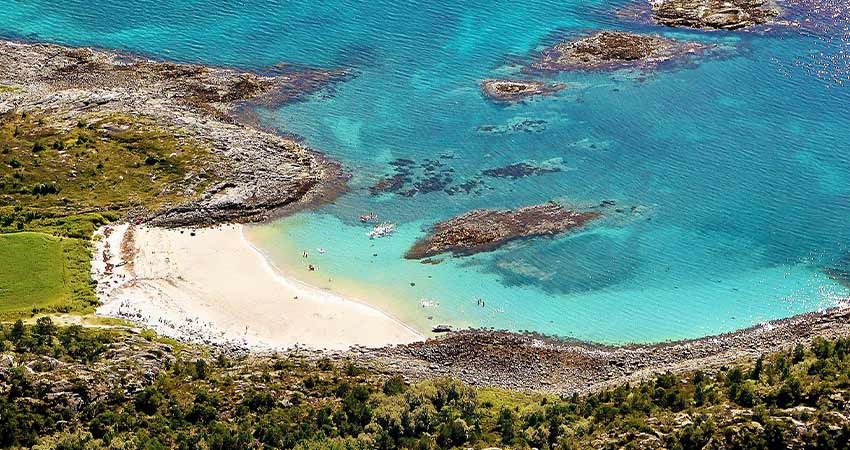
This World Heritage Site is made up of 6,500 islands and islets. Just south of the Arctic Circle on Norway’s west coast, the island of Vega and Sola are a testament to the people here who have developed their own simple lifestyle, centered around fishing, farming, and most importantly, the harvesting of eider down.
People have lived here for 10,000 years. Over time, the tending of eider ducks became central to their livelihood. They built shelters and nests for the wild ducks that migrated to them each spring, and they protected them during their breeding season. In exchange for this protection, the locals gathered their eider down when the birds and new chicks flew away. Women played an important role, and their contribution is celebrated by UNESCO. Amazingly, this way of life has continued and is still alive today.
Urnes Stave Church
Bringing together whispers of several ancient civilizations, this is an ideal example of Scandinavian wooden architecture. It is a fusion of Celtic Art, Viking traditions, and Romanesque architecture. The carved portal, too, is artistically outstanding and taken from an even older church. Built in the 12th century, it is the oldest stave church in Norway. Stave churches are distinctly Norwegian and considered to be the country’s unique contribution to global architecture.
Each World Heritage Site is important enough to receive protection so that future generations can enjoy it, learn from it, and appreciate it. When you visit Norway, here is what you’ll find at a UNESCO Site: An absolutely authentic Norwegian landscape or culture that exemplifies the importance of the people’s relationship with nature.
Let your Destination Expert know that you’re interested in a first-hand Norwegian experience of living harmoniously with the natural world!


